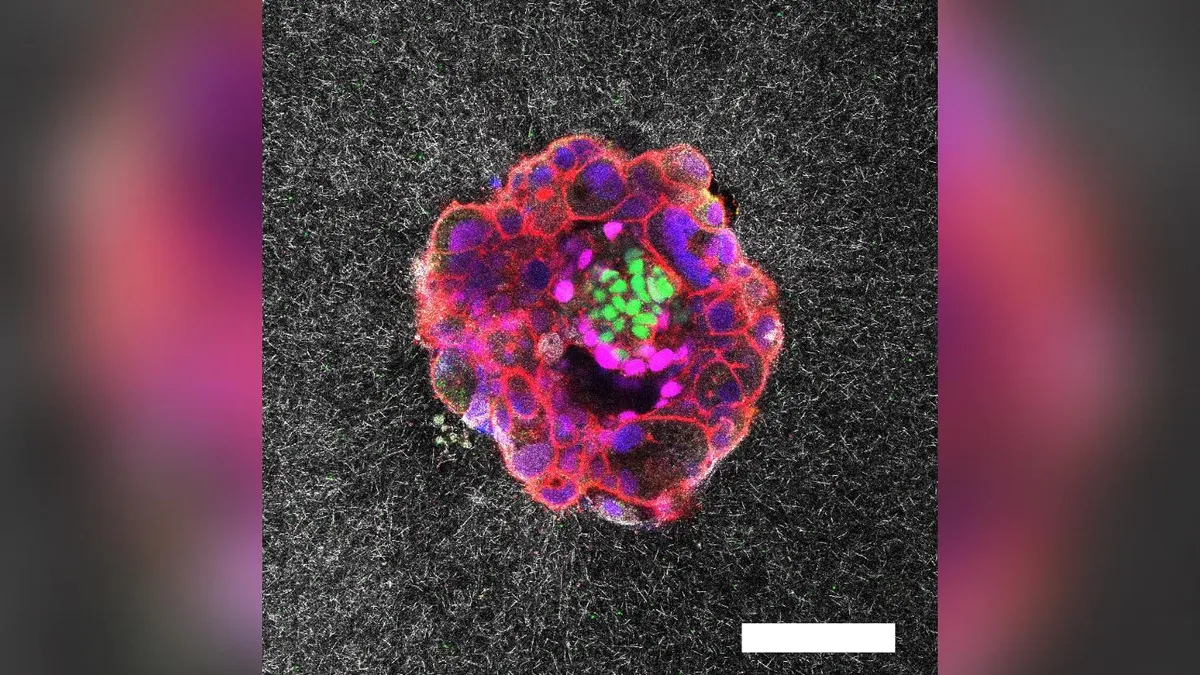
For the first time, scientists have successfully captured a real-time view of a human embryo implanting within a laboratory model of a uterus. This pioneering research could significantly enhance our understanding of the complex implantation process, potentially improving fertility procedures such as in vitro fertilization (IVF). The findings, detailed in a study published on August 15 in the journal Science Advances, could pave the way for advancements in reproductive health.
According to study co-author Samuel Ojosnegros, who serves as the principal investigator for the Bioengineering for Reproductive Health Group at the Institute for Bioengineering of Catalonia (IBEC) in Spain, the team observed that human embryos burrow into the uterus with considerable force. Ojosnegros described the implantation as a "surprisingly invasive process," highlighting the intricate biological dynamics at play.
The researchers developed a specialized apparatus that enabled them to record a video of how human embryos implant in a controlled environment. This innovative setup allowed for precise measurements of the forces exerted during embryo implantation and comparisons between human and mouse embryos. During the implantation process, mammalian embryos attach themselves to the endometrium, the lining of the uterus, beginning their development and multiplication into more cells.
However, implantation failure is a significant obstacle in reproductive health, accounting for approximately 60% of miscarriages. The study emphasizes the importance of understanding how embryo implantation functions in humans, a complex endeavor due to the challenges of capturing brief moments within a sophisticated organ.
Historically, the only existing footage of human implantation consisted of still images taken at specific moments, captured in simple laboratory settings. The breakthrough by IBEC researchers marks a significant advancement in this field. They created a gel composed of various proteins mimicking uterine tissue, which housed early-stage embryos donated by couples undergoing IVF treatment.
Utilizing advanced microscopy and fluorescence imaging techniques, the research team documented the implantation of human embryos into the gel. Their observations revealed that following the release of enzymes that break down uterine tissue, the human embryo began to invade the uterus. Ojosnegros explained that the embryo effectively carves a pathway through the tissue, forming specialized structures that connect to the mother’s blood vessels for nourishment.
Additionally, the study noted that the burrowing embryo exerts force on the uterine tissue, actively moving and reorganizing it. This behavior suggests that the embryos respond to external forces, such as the introduction of other cells and structures within the gel. Co-author Amélie Godeau, a researcher at IBEC, hypothesized that contractions occurring in vivo may influence embryo implantation, indicating a potential avenue for enhancing IVF success rates.
The human uterus naturally contracts one to two times per minute, and these contractions vary throughout the menstrual cycle. Previous research has indicated that individuals with either too many or too few contractions on the day of embryo transfer during IVF tend to have lower implantation rates. This suggests that there might be an optimal frequency of uterine contractions that favors embryo implantation.
While the exact role of these contractions in successful implantation remains an area of ongoing research, the findings from this study could lead to a greater understanding of the complexities of the human uterus and the implantation process. Ultimately, this knowledge may contribute to improved IVF outcomes in the future, providing hope for many couples facing infertility challenges.